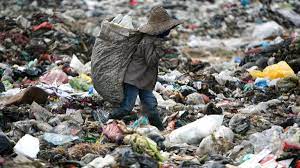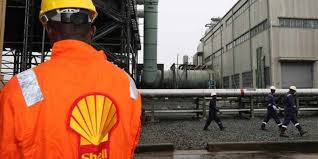Oil & Energy
‘Renewable Energy Waste Crisis Is Much Worse Than You Think’

Waste disposal is not a popular topic of discussion in the media when it comes to renewable energy. Most of the coverage that solar and wind power is getting is strongly positive, with a focus on falling costs and rising efficiencies, as well as government plans for huge increases in installed capacity. Yet problems tend to lurk and wait to spring up. Now, the waste problem is springing up.
TheInternational Renewable Energy Agency (IRENA) estimated in 2016 that unless we made significant changes to our treatment of solar panels, they could add up to 78 million tons of waste. The IRENA did not phrase it this way. It said that “recycling or repurposing solar PV panels at the end of their roughly 30-year lifetime can unlock an estimated stock of 78 million tonnes of raw materials and other valuable components globally by 2050.”
The thing is that most panels do not live to see their 30th birthday, as an article in the Harvard Business Review from June pointed out. Solar waste, it said, is growing much faster than it should have, theoretically. This is because another thing that you wouldn’t see widely publicised is solar panels beginto lose efficiency from the moment they are installed.
Meanwhile, new, more efficient panels are being developed. Even if the loss of efficiency is minuscule, at an average 0.5 percent, that figure is off the top of a typical efficiency rate of less than 30 percent (light-to-electricity conversion), so when offered a higher efficiency installation, many residential solar owners would consider it. The authors of the article, dubbed The Dark Side of Solar Power, point to the continuous improvements in solar panel technology as a reason for shorter actual lives for residential panels. They note that thanks to these improvements, both in cost and efficiency, consumers are a lot less likely to wait for their panels to turn 30 before they replace them. As a result, these early replacements could lead to 50 times more solar panel waste than IRENA had forecast.
It’s worth noting that IRENA’s forecast for the 78-million-ton opportunity from solar panel waste was made in 2016. A lot of things have changed over the past five years, including the rate of growth in solar panel installations. Unfortunately, what hasn’t changed a lot is the economics of recycling solar panels.
Grist reported recently that, according to researchers and recycling industry insiders, the cost of recycling a solar panel varies between $12 and $25. Meanwhile, the income from recovering certain elements from it comes in at about $3. According to the National Renewable Energy Laboratory, recycling a solar panel costs between $20 and $30, while sending it to a landfill costs $1-2. And while the EU has put in place recycling mandates, the U.S. has no such mandates on a national level.
This massive difference in the cost of recycling versus the cost of dumping panels at landfills hints at an unpleasant truth that we are seeing in the EU already. There are recycling mandates there. The countries with the highest solar capacity pay the most for their electricity. This could, of course, be a coincidence, but that’s quite unlikely: recycling costs money, and somebody has to foot that bill.
It is this bill that busts the myth of the cheap solar power that can fuel the whole world because the sun is there and shines for free. This is true. But once you add the costs of recycling to the total cost of solar energy, as the Harvard Business Review authors note, the cost of solar jumps four times.
The future, in the absence of quick action, looks bleak, according to the researchers who penned the HBR article.
“If we plot future installations according to a logistic growth curve capped at 700 GW by 2050 (NREL’s estimated ceiling for the U.S. residential market) alongside the early replacement curve, we see the volume of waste surpassing that of new installations by the year 2031,” Atalay Atasu, Serasu Duran, and Luk N. Van Wassenhove wrote.
“By 2035, discarded panels would outweigh new units sold by 2.56 times. In turn, this would catapult the LCOE (levelised cost of energy, a measure of the overall cost of an energy-producing asset over its lifetime) to four times the current projection. The economics of solar so bright-seeming from the vantage point of 2021 would darken quickly as the industry sinks under the weight of its own trash.”
This sounds bad enough. It’s even worse because there are only a handful of companies in the U.S. that recycle solar panels. But there is also wind turbine blade waste that is building up, and while, unlike solar panels, it does not contain toxic materials, the sheer size of the blades makes it a significant waste problem. Wind turbine blades are not recyclable yet, and tons of them are coming to landfills over the next 20 years; more than 720,000 tons in the U.S. alone.
“Because there are so few options for recycling wind turbine blades currently, the vast majority of those that are no longer able to be used are either stored in various places or taken to landfill,” says CEO, and co-founder of CruxOCM, Vicki Knott.
“While the waste stream represents only a tiny portion of municipal solid waste, it’s clearly not an ideal scenario. As wind turbines are being replaced, there’s certainly a need for more creative recycling solutions for used blades,” Knott also said.
It all sounds like a waste nightmare scenario, and it pretty much is.
While many residential solar panels will live out their lives, many others will not. But this is only the beginning of the problem. Recycling costs must be brought down and capacity built before the current wave of utility-scale solar farm additions subsides because anything done later would be playing catch-up with little chance to win.
Slav writes for Oilprice.com
By: Irina Slav
Oil & Energy
Nigeria Loses More Crude Oil Than Some OPEC Members – Nwoko

Nigeria’s losses due to crude oil theft has been said to be more significant than those of some other members of the Organisation of Petroleum Exporting Countries(OPEC).
The Chairman, Senate Ad- hoc Committee on Crude Oil Theft, Senator Ned Nwoko, made this known in an interview with newsmen in Abuja.
Nwoko noted with dismay the detrimental impact of the issue, which, he said include economic damage, environmental destruction, and its impact on host communities.
According to him, the theft was not only weakening the Naira, but also depriving the nation of vital revenue needed for infrastructure, healthcare, education and social development.
The Senator representing Delta North Senatorial District described the scale of the theft as staggering, with reports indicating losses of over 200,000 barrels per day.
Nwoko disclosed that the ad hoc committee on Crude Oil Theft, which he chairs, recently had a two-day public hearing on the rampant theft of crude oil through illegal bunkering, pipeline vandalism, and the systemic gaps in the regulation and surveillance of the nation’s petroleum resources.
According to him, the public hearing was a pivotal step in addressing one of the most pressing challenges facing the nation.
‘’Nigeria loses billions of dollars annually to crude oil theft. This is severely undermining our economy, weakening the Naira and depriving the nation of vital revenue needed for infrastructure, healthcare, education, and social development.
‘’The scale of this theft is staggering, with reports indicating losses of over 200,000 barrels per day more than some OPEC member nations produce.
‘’This criminal enterprise fuels corruption, funds illegal activities and devastates our environment through spills and pollution.
‘’The public hearing was not just another talk shop; it was a decisive platform to uncover the root causes of crude oil theft, bunkering and pipeline vandalism.
‘’It was a platform to evaluate the effectiveness of existing surveillance, monitoring, and enforcement mechanisms; Identify regulatory and legislative gaps that enable these crimes to thrive.
‘’It was also to engage stakeholders, security agencies, host communities, oil companies, regulators, and experts to proffer actionable solutions; and strengthen legal frameworks to ensure stricter penalties and more efficient prosecution of offenders”, he said.
Nwoko noted that Nigeria’s survival depended
Oil & Energy
Tap Into Offshore Oil, Gas Opportunities, SNEPCO Urges Companies

Shell Nigeria Exploration and Production Company Ltd. (SNEPCo) has called on Nigerian companies to position themselves strategically to take full advantage of the growing opportunities in upcoming offshore and shallow water oil and gas projects.
The Managing Director, SNEPCO, Ronald Adams, made the call at the 5th Nigerian Oil and Gas Opportunity Fair (NOGOF) Conference, held in Yenagoa, Bayelsa State, last Thursday.
Adams highlighted the major projects, including Bonga Southwest Aparo, Bonga North, and the Bonga Main Life Extension, as key areas where Nigerian businesses can grow their capacity and increase their involvement.
“Shell Nigeria Exploration and Production Company Ltd. (SNEPCo) says Nigerian companies have a lot to benefit if they are prepared to take advantage of more opportunities in its offshore and shallow water oil and gas projects.
“Projects such as Bonga Southwest Aparo, Bonga North and Bonga Main Life Extension could grow Nigerian businesses and improve their expertise if they applied themselves seriously to executing higher value contracts”, Adams stated.
Adams noted that SNEPCo pioneered Nigeria’s deepwater oil exploration with the Bonga development and has since played a key role in growing local industry capacity.
He emphasized that Nigerian businesses could expand in key areas like logistics, drilling, and the construction of vital equipment such as subsea systems, mooring units, and gas processing facilities.
The SNEPCO boss explained that since production began at the Bonga field in 2005, SNEPCo has worked closely with Nigerian contractors to build systems and develop a skilled workforce capable of delivering projects safely, on time, and within budget both in Nigeria and across West Africa.
According to him, this long-term support has enabled local firms to take on key roles in managing the Bonga Floating, Production, Storage and Offloading (FPSO) vessel, which reached a major milestone by producing its one-billion barrel of oil on February 3, 2023.
Oil & Energy
Administrator Assures Community Of Improved Power Supply

The Emohua Local Government Area Administrator, Franklin Ajinwo, has pledged to improve electricity distribution in Oduoha Ogbakiri and its environs.
Ajinwo made the pledge recently while playing host in a courtesy visit to the Oduoha Ogbakiri Wezina Council of Chiefs, in his office in Rumuakunde.
He stated that arrangements are underway to enhance available power, reduce frequent outages, and promote steady electricity supply.
The move, he said, was aimed at boosting small and medium-scale businesses in the area.
“The essence of power is not just to have light at night. It’s for those who can use it to enhance their businesses”, he said.
The Administrator, who commended the peaceful nature of Ogbakiri people, urged the Chiefs to continue in promoting peace and stability, saying “meaningful development can only thrive in a peaceful environment”.
He also charged the Chiefs to protect existing infrastructure while promising to address the challenges faced by the community.
Earlier, the Oduoha Ogbakiri Wezina Council of Chiefs, led by HRH Eze Goodluck Mekwa Eleni Ekenta XV, expressed gratitude to the Administrator over his appointment and pledged their support to his administration.
The chiefs highlighted challenges facing the community to include incessant power outage, need for new transformers, and the completion of Community Secondary School, Oduoha.
The visit underscored the community’s expectations from the LGA administration.
With Ajinwo’s assurance of enhancing electricity distribution and promoting development, the people of Oduoha Ogbakiri said they look forward to a brighter future.
By: King Onunwor
-
Business2 days ago
2027: Group Vows To Prevail On Diri To Dump PDP For APC
-
News1 day ago
FG Renames University of Maiduguri After Buhari …As Tinubu Pours Encomiums On Late President
-
News1 day ago
NUP Denies Planned Protest Over N32,000 Pension Increment
-

 News1 day ago
News1 day agoRivers PDP Debunks Sale Of LGA Election Forms
-
Niger Delta1 day ago
Bishop Mocks Fake Prophecy Seekers … As Priests Relive Challenges At Ordination Ceremony
-
Opinion2 days ago
Welcome! Worthy Future For R/S
-
Rivers1 day ago
Motor Spare Parts, Industrial Generators Dealers’ Union Swears Gets New Chairman in Port Harcourt
-
News1 day ago
South-South Contributes N34trn To Nigeria’s Economy In 2024 – Institute

